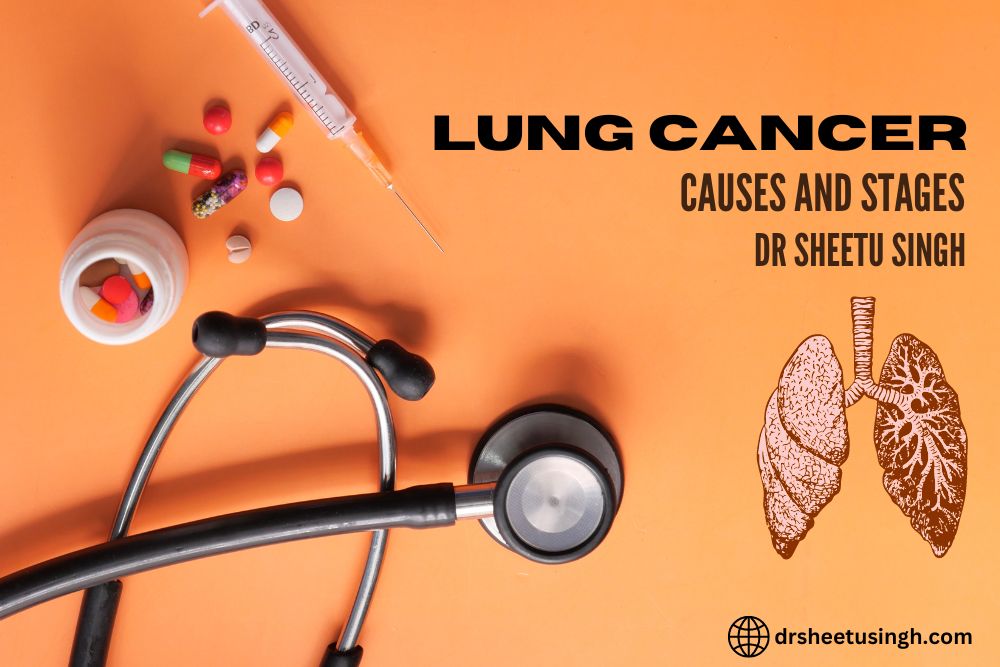
Lung Disease: Our lungs are a very crucial organ of our body. They inhale oxygen and exhale carbon dioxide. However, things start to deteriorate when lung damage interferes with this gas exchange process. Those with COPD experience a host of issues, including movement-limiting shortness of breath, chronic coughs producing phlegm, and decreased energy from poor oxygenation. This group of symptoms acts as a diagnostic feature of chronic lung diseases that causes the person to suffer a lot by making basic functions so difficult.
Many respiratory conditions, such as asthma, tuberculosis, pneumonia infections, or lung cancer, are genetic or result from lung irritants such as smoking, pollution, and workplace dust/chemicals that have accumulated over time. Inflammation and stiffness of airways do not let oxygen enter the alveoli properly, and carbon dioxide leaves the lungs.
We provide you basic knowledge about lung diseases, testing methods, preventable risk factors, and proven ways of retaining the remaining lung capacity through medications and healthy habits. Doctor of Lung Disease…
Causes and Risk Factors
While genetics contribute for some, lifestyle and environmental exposures largely influence lung disease progression:
- Cigarette smoking
- Secondhand smoke
- Occupational chemical/particulate exposures
- Indoor/outdoor asthma triggers
- Radon gas accumulation
- Bacterial/viral contacts
Symptoms of Lung Diseases
The symptoms of lung diseases can vary depending on the specific condition, but some common signs and symptoms include:
- Shortness of breath or difficulty breathing
- Persistent cough
- Wheezing or whistling sound when breathing
- Chest tightness or pain
- Fatigue and weakness
- Coughing up blood or mucus
Types of Lung Diseases
Key lung diseases involve airway inflammation and obstruction in unique ways:
- Asthma
- Chronic Obstructive Pulmonary Disease (COPD)
- Pneumonia
- Lung Cancer
- Tuberculosis
1. Asthma
Asthma manifests as inflamed, swollen airways hyperreactive to triggers like dust or pollen. Periodic tightening spasms narrow passages, interrupting smooth airflow. Symptoms involve wheezing, coughing, chest tightness, and shortness of breath, typically resolving between flareups with proper care. In younger patients, prevention focuses on limiting exposure to known triggers whenever possible with assistance from the maintenance controller and rescue inhaler medications.
2. Chronic Obstructive Pulmonary Disease (COPD)
Umbrella COPD term covers progressive airflow impediments like emphysema and chronic bronchitis. Inhaled lung irritants promote inflammation gradually hindering airway tissue elasticity and gas exchange. Indications start subtly with productive coughs and shortness of breath, evolving to hypoxemic respiratory failure inability without interventions slowing deterioration. Smoking cessation, medications, pulmonary rehabilitation, and supplemental oxygen help retain capabilities that balance quality longevity.
3. Pneumonia
Bacterial or viral lung infections cause significant pus and fluid buildup inside alveoli air sacs, blocking oxygen absorption into blood circulation. Pneumonia follows cold/flu germ migration downward, prompting urgent care to treat causative pathogens and prevent sepsis. Though vaccine-preventable, pneumonia remains a top infectious cause of mortality when unchecked.
4. Lung Cancer
Uncontrolled rapid cell mutation growths inside lung tissue form dangerous malignant tumors, compromising function. Insidious onset of symptoms like worsening cough, fatigue, appetite/weight changes, chest/shoulder pain, and coughing blood prompts concern.
5. Pulmonary Fibrosis
Pulmonary fibrosis is a long-term illness that causes lung tissues to harden. This scarring negatively affects the lungs, making them ineffective. Unlike other diseases, the specific cause of pulmonary fibrosis is usually undetermined. However, it can be associated with inhaling toxic substances, autoimmune disorders, or the consumption of certain medications.
6. Tuberculosis
Highly contagious airborne Mycobacterium TB bacteria transmit through close carrier exposure targeting lung tissues. This results in damage from proliferating colonies and immune response inflammation, which impedes respiratory dynamics like air sac elasticity. Complex long-term antibiotic regimens combat the spread systemically and reduce transmission risk once traces are eliminated.
Diagnosis and Treatment
Diagnostic evaluations pulmonologists use to assess overall lung condition and guide appropriate treatments include:
- Pulmonary Function Tests measuring airflow velocity
- Blood Oxygen Monitoring Quantifying hypoxia
- Chest Imaging Finding lesions indications
- Lung Tissue Biopsies Confirming Cell Mutations
- Sputum Cultures Identifying infections
Preventive Measure
Here are some easy ways to help prevent lung disease:
- Don’t smoke. If you smoke, you must quit doing so.
- If you know that someone is smoking, try to keep a distance from them. It could also damage your lungs. Listen to the given audio and plug in the correct word.
- Do not partake in activities that expose you to dirty air. In the case of air pollution is the term used for this.
- If you work with dust or chemicals, you should use a mask to protect your lungs from any health threat.
- Exercise often. They do this by preventing lung weakness.
- Focus on consuming foods like fruits and vegetables.
- Keep washing your hands. This reduces your chances of getting unwell from infectious microbes that transfer via touch, air, or objects.
Conclusion
Lung diseases can be very serious, and they can influence a person’s quality of life to a great extent. However, diagnosis and therapy can often lead to efficient control of the symptoms in many patients, resulting in a fulfilled life. You should not disregard the symptoms of lung disease if you have them because you need to consult an expert doctor like Dr. Sheetu Singh. She is highly knowledgeable and experienced enough to prescribe the best treatment option. Keep in mind that the lungs are an organ that is crucial for the health and the quality of life of the person.
